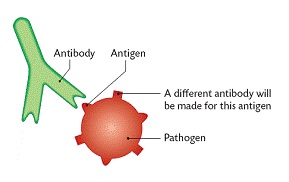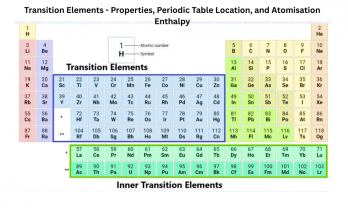Antigens and pathogens are distinct biological entities central to immune responses and disease mechanisms. Antigens are molecular structures that trigger immune recognition. Pathogens are disease-causing agents that exploit host systems. These differences have significant implications in immunology, vaccine design and diagnostics.
Table of Contents
Definition of Antigen and Pathogen
What is an Antigen?
An antigen is any molecule or molecular structure that can be recognized by the immune system, especially by antibodies, B cells, or T cells. Antigens may originate from both external sources (like viruses, bacteria, pollen) and internal sources (such as cancer cells or the body’s own tissues in autoimmune disorders). Antigens are not inherently harmful, but they are foreign in the context of the immune system and provoke a targeted immune response.
What is a Pathogen?
A pathogen is a biological agent that causes disease or illness in its host. Pathogens include a wide variety of infectious organisms such as bacteria, viruses, fungi, protozoa, helminths and prions. Unlike antigens, pathogens directly damage tissues, disrupt bodily functions and evoke complex immune responses.
Key Differences Between Antigen and Pathogen (Tabular Format)
| Aspect | Antigen | Pathogen |
| Nature | A molecule or molecular structure that triggers an immune response | A living or non-living organism that causes disease |
| Composition | Proteins, polysaccharides, lipids, or nucleic acids | Bacteria, viruses, fungi, protozoans, helminths, or prions |
| Source | Can be endogenous or exogenous; found in pathogens, pollens, food, etc. | Primarily biological (bacteria, fungi, viruses); may include non-cellular agents like prions |
| Role in Disease | Does not directly cause disease; acts as a trigger for immune detection | Directly causes disease through infection or toxicity |
| Interaction with Immune System | Recognized by antibodies and lymphocytes; triggers immune response | Contains antigens; may also evade or suppress immune mechanisms |
| Classification | Heteroantigens, autoantigens, alloantigens | Classified into bacteria, viruses, fungi, protozoa, prions |
Also Check – Difference Between Antigens and Antibodies – Structure, Function, and Role in Immunity
Detailed Comparison
A. Structural Composition
- Antigens are defined by their molecular identity. Most are proteins or glycoproteins. Some antigens are composed of polysaccharides, lipids, or nucleic acids. Their structure determines how they are processed by antigen-presenting cells and recognized by specific lymphocyte receptors.
- Pathogens are cellular or acellular entities composed of multiple biomolecules. A bacterium contains cell walls, cytoplasmic content, genetic material and surface antigens. A virus includes a nucleic acid core enclosed in a protein capsid, sometimes with a lipid envelope. Prions are misfolded proteins with no nucleic acid content, but still infectious.
B. Biological Function
- Antigens serve as markers to the immune system. They do not cause disease but indicate the presence of something potentially harmful or foreign. Their role is limited to recognition and triggering a targeted immune response.
- Pathogens actively replicate, spread and manipulate host environments. They may produce toxins, block immune signaling, or induce cell lysis. Their activity leads directly to pathology such as inflammation, tissue damage, or systemic failure.
C. Immune System Response
- Antigens are processed by antigen-presenting cells (APCs) and presented to lymphocytes via major histocompatibility complex (MHC) molecules. This interaction leads to clonal expansion of B or T cells and antibody generation.
- Pathogens elicit both innate and adaptive immune responses. Innate responses include inflammation, phagocytosis and cytokine release. Adaptive responses are pathogen-specific, involving antibody production and cytotoxic T cell activity. Some pathogens can avoid detection using antigenic variation, molecular mimicry, or immune suppression.
D. Source and Classification
- Antigens are classified based on their origin and function-
- Exogenous antigens– Enter the body from outside (e.g., microbes, allergens).
- Endogenous antigens– Generated inside infected or damaged host cells.
- Autoantigens– Host molecules targeted in autoimmune disorders.
- Alloantigens– Found in individuals of the same species (e.g., blood group antigens).
- Exogenous antigens– Enter the body from outside (e.g., microbes, allergens).
- Pathogens are categorized based on their biological nature-
- Bacteria– Prokaryotic cells (e.g., Streptococcus pneumoniae)
- Viruses– Acellular particles with DNA or RNA (e.g., SARS-CoV-2)
- Fungi– Eukaryotic organisms (e.g., Candida albicans)
- Protozoa– Unicellular eukaryotes (e.g., Plasmodium falciparum)
- Prions– Infectious proteins (e.g., causing Creutzfeldt–Jakob disease)
- Bacteria– Prokaryotic cells (e.g., Streptococcus pneumoniae)
FAQs- Antigen vs Pathogen
Q1- Is every antigen part of a pathogen?
No. Antigens may originate from pathogens, but they also occur in non-pathogenic substances like pollen, transplanted tissues, or self-molecules in autoimmune diseases.
Q2- Can pathogens exist without antigens?
No. All pathogens contain multiple antigens on their surfaces, which the immune system uses to identify and target them.
Q3- Are antigens always harmful?
No. Antigens are not inherently harmful. Their presence merely indicates foreignness; immune responses can be beneficial (protection) or harmful (allergies, autoimmunity) depending on context.
Q4- How does vaccination utilize antigens?
Vaccines introduce harmless antigens (from pathogens) to stimulate immunity without causing disease. The body forms memory cells that respond rapidly to future infections by the same pathogen.
Q5- Can antigens be used in diagnostics?
Yes. Antigen detection assays are widely used in diagnostics (e.g., rapid COVID-19 antigen tests) to confirm the presence of a pathogen based on its molecular signature.
Summary
| Criteria | Antigen | Pathogen |
| Identity | Molecule recognized by immune system | Disease-causing agent |
| Function | Immune system activation | Invasion, replication, tissue damage |
| Composition | Proteins, polysaccharides, etc. | Organisms or infectious particles |
| Examples | Surface proteins, toxins, food allergens | Bacteria, viruses, fungi, protozoans, prions |
| Immune Target | Yes | Yes, via their antigens |
| Disease Role | Triggers immune response without causing disease | Causes disease directly |


